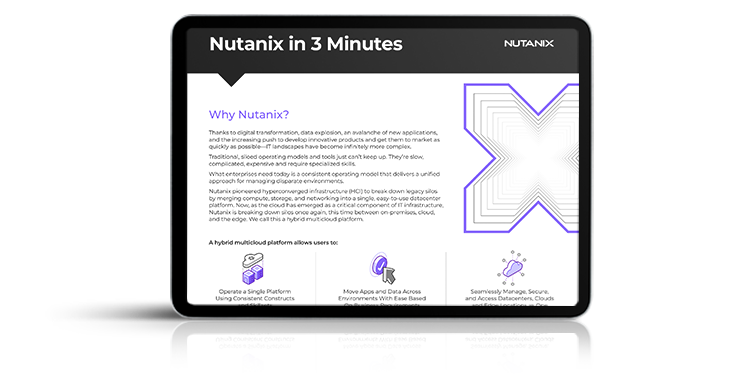Moving from Multiple Clouds to Multicloud
Benefits to Individual Contributors, Managers and Senior Leadership
By Nicholas Holian, Worldwide Field CTO, Nutanix
This blog is the third in a series that focuses on the value of a hybrid multicloud infrastructure.
The process of transitioning to a unified hybrid multicloud environment is undoubtedly complex, but the benefits it brings make the effort worthwhile at every layer of your organization.
From optimizing job security and operational efficiency for individual contributors to providing excellent agility and strategic decision-making capabilities for senior leadership, hybrid multicloud offers a comprehensive approach that addresses the diverse needs of modern enterprises.
This blog delves into how hybrid multicloud can positively impact different roles within your organization and create a smooth and effective IT transformation.
Individual Contributors
For employees working with cloud infrastructure, transitioning to a hybrid multicloud environment may open up new job opportunities. Historically, shifts in technology have created avenues for career growth and development.
However, in a unified multicloud environment, employees are more likely to be cross-trained on a variety of cloud platforms and technologies, making them more versatile and valuable to the organization.
Additionally, operational metrics such as mean time to recovery (MTTR), downtime reduction and overall efficiency will likely improve with a standardized hybrid multicloud environment, which can give individual contributors a strong sense of accomplishment. As new technologies emerge, employees might also have opportunities to upskill and reskill to enhance their career longevity.
Management
Management teams can achieve great agility and flexibility in workload placement. In a unified cloud environment, teams no longer need to specialize in specific cloud platforms. Instead, they can handle a wider variety of tasks because all systems and technologies are consistent across the organization.
This increase towards flexibility extends to workforce management as well. Specialized teams lead to siloed knowledge and skill sets. But with a unified hybrid multicloud environment, employees can collaborate seamlessly across different areas.
Managers will be able to quickly address issues with the confidence that their teams can adapt to emerging technologies. No longer will specific operations rely on the knowledge and presence of a single person.
VPs and Senior Leadership
For senior leaders like VPs and department heads, a hybrid multicloud environment helps satisfactorily answer the question: Am I enabling my teams to adapt quickly and smoothly to meet our business needs in the future?
With an increase towards flexibility, hybrid multicloud can help organizations prepare for future demands. This makes it easier to partner with other departments and share knowledge because everyone is working with the same set of tools and technologies.
Organizations can additionally address customer needs in their environment along their cloud journey, regardless of where the original hosting location was.
A unified cloud environment also helps department heads make more strategic decisions based on a cohesive view of the entire organization’s cloud usage. This creates a strong foundation for scaling operations and driving business innovation.
Future-Proof Your Organization with Hybrid Multicloud
Moving to a unified hybrid multicloud environment is an important step in future-proofing your organization. By embracing hybrid multicloud, you gain the ability to adapt to technological advancements, from new software and hardware to cutting-edge applications.
With a more flexible cloud strategy, your organization will be empowered to keep its competitive edge and continuously leverage the best resources available in the cloud.
Future-proofing means adapting to change as well as maintaining business continuity and operations in the event of a disaster or other unexpected outage.
With the ability to move workloads across clouds, it’s easier to keep operations up and running, even if one provider experiences an outage. This resilience can help to safeguard your business ,strengthen customer trust and potentially lead to long-term success.
The journey from multiple siloed clouds to a hybrid multicloud environment might be challenging, but it offers immense potential benefits for organizations that take the time to do it right.
Whether you’re looking to improve operational efficiency, reduce costs or future-proof your business, the rewards of a unified multicloud strategy are well worth the effort.
Stay tuned for the final installment of our four-part series on hybrid multicloud infrastructure. Next, we’ll examine how to optimize workloads and discover why hybrid multicloud is the ideal infrastructure to meet today’s evolving needs.
Related Blogs
Multiple Clouds or Multicloud? Understanding the Key Differences
©2025 Nutanix, Inc. All rights reserved. Nutanix, the Nutanix logo and all Nutanix product and service names mentioned are registered trademarks or trademarks of Nutanix, Inc. in the United States and other countries. All other brand names mentioned are for identification purposes only and may be the trademarks of their respective holder(s).
